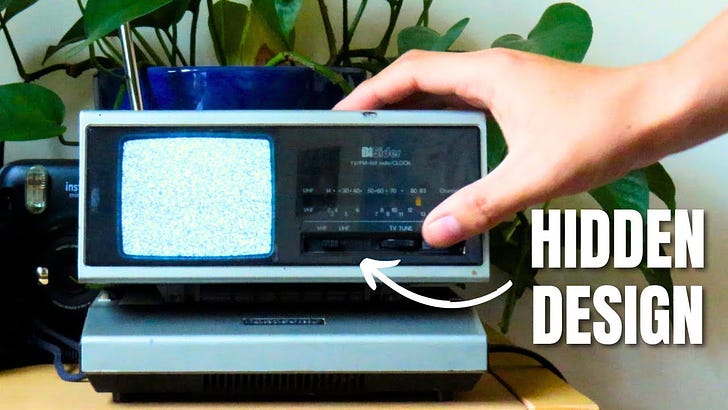This project has to be a video — it’s too visual not to be. Rather than posting here a text version of the video’s script, I want to explain what brought me to this project.
I discovered James Scholz’s YouTube channels a few weeks ago and fell in love with his late-90s early-aughts digital aesthetic. He uses an analog, physical Pomodoro timer for studying. He completes his schoolwork on a beige Compaq CRT monitor with an IBM Model M keyboard. He films his longer livestreams on what looks like a Sony Handycam: the Hi8 kind, not the new 4K digital kind. He carries a dumb phone, often a Nokia.
At first I enjoyed his setup as little more than an aesthetic, maybe a subsersive affectation or a knee-jerk rejection of new technology. But the more I watched, the more I realized his design choices were driven by two real factors: frugality and digital minimalism.
To the first point, James is a student and works on a student’s budget. He picks up many of his pieces from thrift stores or for cheap on eBay. Fully functioning monitors and desktop computers sell for under $100 online. These make for affordable but slow platforms for basic word processing and Internet browsing.
“Digital minimalism” comes from Cal Newport’s book by the same name. I haven’t read the book yet — it’s on my list — but the way James explains it, it explores ways of reclaiming our attention from our devices. Using these “dumber” devices from earlier decades is just one way of doing so, but I think an important one. This project is my first foray into this space.
I’ve often thought about buying a typewriter or a stand-alone word processor. Partly because I like how they look, and partly because I love single-purpose devices. When I’m trying to get things done, when I most need to focus, there can be something crippling and paralyzing about the infinite possibilities offered up by an iPhone or a laptop. One moment of weakness — the opening of a single new tab — can derail me for hours.
The all-in-one nature of smartphones and laptops is first and foremost a huge convenience. I would never want to decompose a smartphone into each of its constituent functions and devote a single device to each one. The sheer volume would probably bury my apartment.
But there are select functions that I would love to isolate, to crystallize in some dedicated physical device, with all the rituals and attachments that spring up around physical devices. I miss, for example, my iPod Nano: a dedicated device for listening to music. But Spotify is just too convenient to ditch. I miss my Gameboy. But that’s more nostalgia than real desire. I miss a more innocent time in technology design: when devices were designed not to capture users’ attention as a commodity but to serve their needs. When on-screen colors were chosen for their mutual compatibility and not for their ability to optimize user engagement, as informed by focus groups. Of course, I don’t want to be too romantic about earlier device design. Marketability has always played a role in manufacturing. So maybe I just miss a time when it wasn’t yet so systematized, when there wasn’t yet the data on which to optimize.
I suppose I’m saying: if anyone knows where I can get a stand-alone word processor, let me know.





